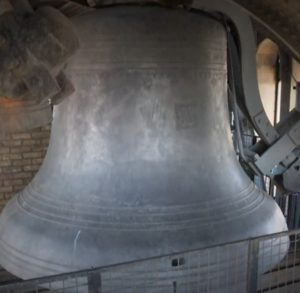Legacy Worthy Clock: BIG BEN
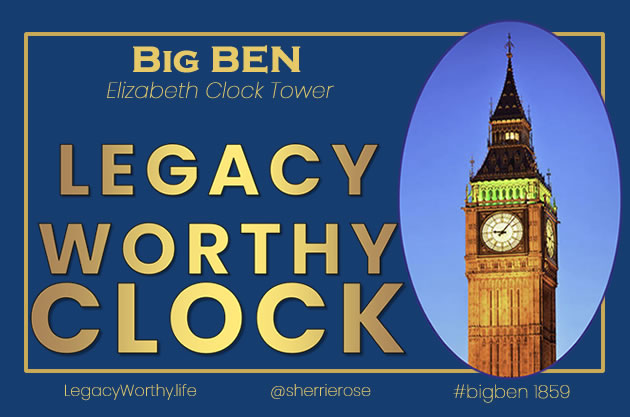
Big Ben: The Legacy Worthy Clock
Big Ben, the legacy worthy clock! Discover the legacy worthy clock called Big Ben and explore how this iconic timepiece has become an enduring symbol of London and the United Kingdom for centuries.
As you explore the legacy of this famous clock, you will gain insight into its engineering and construction, its enduring significance around the world, and its future in the world of time.
You will also gain a deeper appreciation for the effort that goes into maintaining it and its home, the Elizabeth Tower.
#1 History of Big Ben
Although it’s been around for centuries, the history of this iconic landmark is still captivating – it’s certainly more than just a time-keeper!
Big Ben, the nickname for the Great Bell of the clock at the north end of the Palace of Westminster in London, is one of the most famous timepieces in the world. The clock was officially completed in 1859 after two years of construction, and was designed by British civil engineer and clockmaker Edward John Dent.
The clock was initially known as the Great Clock of Westminster, but Big Ben was later given as the name of the bell, which is 13.7 tons in weight and stands at over seven metres tall. Big Ben is an important piece of British history that has been part of the London skyline for over a century and a half.
Two theories exist regarding the origin of the name “Big Ben” for London’s clock tower. One theory posits that the tower was named after Sir Benjamin Hall, the first commissioner of works, while the other links the name to Benjamin Caunt, a champion boxer renowned for his size. In those days, the moniker “Big Ben” was frequently used to describe the heaviest individual in a gathering, a label that was applicable to both Hall and Caunt.
It is an iconic landmark that has become a symbol of the United Kingdom, and it is a reminder of the importance of precision and accuracy in timekeeping. The clock has withstood the test of time and is still keeping perfect time to this day, making its legacy one that will last for centuries to come. Next to the Houses of Parliament, the tower that houses the enormous bell, the clock tower — officially known as the Elizabeth Tower since 2012 when it was renamed in honor of Queen Elizabeth II’s diamond jubilee — stands tall over the Palace of Westminster, which houses the British Parliament and is one of the world’s most instantly recognized constructions.

#2 Big Ben Engineering and Construction
You’ll be amazed by the engineering and construction that went into this iconic timepiece!
Big Ben’s clock tower is a marvel of modern engineering and construction, with a unique design that allows it to stand up to the elements. It is made up of two separate towers, each measuring more than 120 feet in height, and connected by a bridge.
The clock’s face is made of glass, with a dial that has a diameter of 23 feet. The clock mechanism is powered by a pendulum, which is made of solid brass. The weight of the pendulum is more than half a ton, and is supported by a series of cables and pulleys. Additionally, the clock is powered by a series of weights and a hydraulic system.
The engineering and construction of Big Ben is an impressive feat. The clock has been ticking since 1859, and is still keeping time with precision. It has withstood the test of time and has become a symbol of London and the United Kingdom.
Its iconic sound is recognized around the world, and it continues to stand as a testament to the skill and knowledge of its engineers and builders. The engineering and construction of Big Ben is a legacy worthy of admiration.
The Westminster Chimes (from the clock tower of London’s Palace of Westminster) followed by the work that was supposedly the inspiration for the original Cambridge Chimes. The Westminster Quarters is one of the most famous tunes in the world, and it can be heard on clocks and chimes all over the globe. It is a simple but beautiful tune that is instantly recognizable, and it is a fitting sound for one of the most iconic landmarks in the world. Big Ben plays is a variation of the four notes making up the fifth and sixth bars from I Know My Redeemer Liveth — part of Handel’s Messiah.
#3 Big Ben and Elizabeth Tower
Did you know that there was a different clock tower at Parliament before the tower we know and love today was built? Below is a very brief history of Big Ben and the Elizabeth Tower – and the clock towers that came before it via the UK parliament website.
1290s: The first clock tower is said to have been built on the site but there are no records of it.
1367: The early clock tower (if there was one) is replaced with a new tower and clock. This was the first public chiming clock in England.
1698: The medieval clock tower is pulled down and a sun dial put up in its place.
1699: The clock tower had fallen into disrepair. Its bell is sent to St Paul’s Cathedral but broke on the way.
1716: The bell from the clock tower is recast and later hung in the South West Tower of St Paul’s Cathedral. If Big Ben is ever unable to strike, the bell in St Paul’s is heard instead.
1834: The Palace of Westminster is almost completely destroyed by fire.
1840: Construction of the New Palace of Westminster begins. Architect Charles Barry wins the commission to design the new palace and includes a clock tower in his final designs. He hires Augustus Welby Pugin to help bring the palace’s Gothic Revival style to life.
1843: Construction begins on the Clock Tower. Foundation stone laid.
1846: A competition is held to decide who should build the clock. The Astronomer Royal, Sir George Airy is named referee. Stipulations for the clock’s accuracy meant it took seven years before the designs were finalised.
1852: John Dent is appointed to build the clock to the designs of Edmund Beckett Denison. This is the same year that the New Palace of Westminster was opened by Queen Victoria at the State Opening.
1854: The clock mechanism is completed.
1856: The first ‘Big Ben’ bell is cast at Warners of Norton near Stockton-on-Tees. The bell was originally to be called ‘Royal Victoria’.
1857: The first ‘Big Ben’ develops a 1.2m crack during testing. Warners, the bell’s manufacturer, and Edmund Beckett Denison, designer of the Great Clock, clash over who is responsible for the damage.
1858: In April, the second ‘Big Ben’ is cast by the Whitechapel Bell Foundry in East London. It is transported to New Palace Yard on a carriage drawn by 16 white horses and raised to the belfry.
1859: The Great Clock starts ticking on 31 May and the Great Bell’s strikes are heard for the first time on 11 July. Later that year, Big Ben is found to be fractured again. Big Ben remains silent with the largest quarter bell striking the hourly chime.
1863: At the suggestion of Sir George Airy, the Astronomer Royal, Big Ben is turned 90 degrees and the hammer size reduced, allowing Big Ben to strike the hours once more.
1923: BBC Radio first broadcasts Big Ben’s chimes to the United Kingdom on New Year’s Eve.
1932: Big Ben’s strikes are broadcast internationally for the first time by the Empire Service (later the World Service) as part of King George V’s Christmas broadcast.
1939: From this date until April 1945, the clock dials remain in darkness to comply with blackout regulations during the Second World War.
1945: The clock dials are re-illuminated when wartime blackout regulations were lifted.
1976: In the middle of the night on the 5 August, a mechanical failure causes serious damage to the Great Clock. The pendulum weights spiral out of control down the weight shaft and the clock mechanism explodes. Big Ben is silent for nearly nine months. The repairs are completed in time for the bells to ring out to mark the occasion of Queen Elizabeth II’s Silver Jubilee visit to Westminster Hall in May 1977.
2007: Big Ben and the quarter bells are silenced from 11 August to 1 October while the Great Clock undergoes essential maintenance work.
2012: The Clock Tower is renamed the Elizabeth Tower to honour HM Queen Elizabeth II’s Diamond Jubilee.
2017: The largest and most extensive conservation of the Elizabeth Tower begins to preserve the clock tower for future generations. The renovation period marked the longest period of silence in the landmark’s 165-year history.
2022: The 13-tonne Big Ben bell was largely silenced for five years while a major restoration of the Elizabeth Tower took place, with the so-called ‘bongs’ finally resuming regular service in November 2022. Big Ben is brought back into regular service, with the conservation completing the same year.
2023: (10th May 12:55PM) Big Ben fails to strike as clocks stop at Houses of Parliament. London’s Big Ben fails to strike for almost one hour due to mechanical glitch.
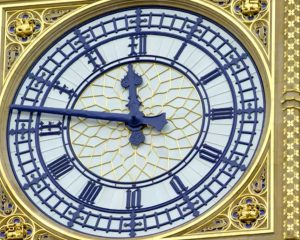
#4 Maintaining the Clock and the Elizabeth Tower
Maintaining the Elizabeth Tower and its clock is an ongoing task that requires dedication and commitment. It ensures the tower’s continued presence as a symbol of strength and progress for generations to come. This role cannot be underestimated in preserving the legacy of Big Ben, which has been the heart of London for over 150 years.
The clock is maintained by a team of experts dedicated to the preservation of the clock, its tower, and its historical importance. The Elizabeth Tower is one of the most iconic landmarks in the world, a symbol of the city of London. As such, the team must ensure that all maintenance activities are done with the utmost care and precision.
The £80 million ($91m) restoration project of the Elizabeth Tower, which houses Big Ben, began in 2017. The project includes repairs to the clock mechanism, the dials, and the tower itself.
The clock mechanism is being repaired and upgraded. The dials are being cleaned and restored to their original colors. The tower is being cleaned and repaired, and its stonework is being restored. The project is also including a number of safety improvements, such as new fire alarms and sprinkler systems. The lighting systems in the Tower will also be completed, with the clock dials’ new energy-efficient LED illumination in operation. The new lighting system behind the dials will have the ability to change colour when required.
The restoration project is being funded by the Heritage Lottery Fund, the Department for Digital, Culture, Media and Sport, and the Houses of Parliament. The project is being overseen by a team of engineers, architects, and historians.
The Elizabeth Tower is a Grade I listed building, which means that it is of exceptional national importance. The restoration project is essential to ensure that the tower is preserved for future generations.
The restoration project has been controversial, with some people arguing that the money could be better spent elsewhere. However, the project is essential to ensure that the Elizabeth Tower is preserved for future generations. The tower is a symbol of Britain and its history, and it is important that it is kept in good condition. See video of inside Big Ben.
Despite the challenges, the team has managed to keep the clock ticking since the day it was built. This commitment to precision and craftsmanship is one of the reasons why the legacy of Big Ben endures.
The Elizabeth Tower, which houses Big Ben, experienced a technical glitch on May 10, 2023, caused the clock to briefly stop working and the bell to fail to chime. The issue was quickly resolved and the clock and bell were back to normal operation within an hour.
What’s inside Big Ben? (Elizabeth Tower) – YouTube
#5 Enduring Significance Around the World
The enduring significance of Big Ben’s engineering and construction is undeniable, inspiring awe in those who appreciate its timeless beauty. Its clock tower stands tall in London, with its four clock faces visible from all sides.
As the world’s largest four-faced chiming clock, it is a symbol of British engineering excellence and a reminder of the country’s rich history. Big Ben’s clock tower is one of the most recognizable and iconic structures in the world, and its chiming bell has been heard around the world as a symbol of time and progress.
The clock has been a part of the British landscape since it was first built in 1859 and has become a symbol of strength, resilience and progress. It has been an important part of the city’s identity and a source of pride and inspiration for generations.
Despite the passing of time and the ever-changing political and cultural landscape, Big Ben’s legacy remains, and its significance and importance are still felt around the world.
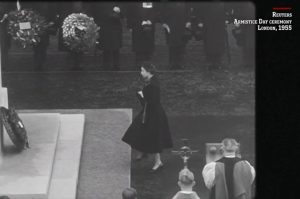
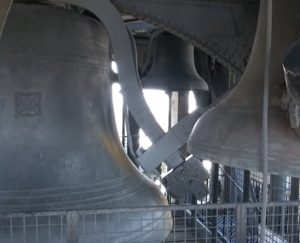
#6 Big Ben in the Future of Time
You can’t help but feel inspired by the timelessness of Big Ben, a reminder of the importance of making each moment count. In a world that’s ever-changing, Big Ben stands as a symbol of consistency, a reminder of how the past can still be relevant in the present.
With its iconic chimes ringing out every hour, it will continue to be the symbol of the passing of time, providing each generation with a sense of continuity and hope. The legacy of Big Ben will live on in the future, with its timelessness and beauty. Its clock face will continue to be a reminder of the passing of time, encouraging us to make the most of each moment.
It will also remind us of our history, inspiring us to keep traditions alive, even as the world around us changes. Big Ben will stand as a reminder to all of us of the importance of the present, inspiring us to make the most of the time we have.
Big Ben 12 O’clock chimes – YouTube
#7 Legacy Worthy Clock BIG BEN
You’ve traveled through time, tracing the legacy of Big Ben. From its engineering and construction to its enduring significance around the world, the clock has captivated the hearts and minds of people for over 150 years.
It has become a symbol of strength, reliability, and resilience, and its chimes ringing out over London have been a source of comfort and joy.
Maintaining the clock and the Elizabeth Tower requires a dedicated team of experts working together, keeping the clock ticking and the tower standing for generations to come.
As we look to the future of time, Big Ben will be forever remembered as a timeless icon of tradition, reflecting the power of engineering and the resilience of the human spirit.
BIG BEN website 1
BIG BEN website 2
BIG BEN website 3
BIG BEN website 4
BIG BEN website 5
BIG BEN website6
BIG BEN website 7
BIG BEN website 8
BIG BEN website 9
BIG BEN website 10
Another Famous London Clock: Daily Telegraph Clock
The clock on Fleet Street, London, UK often called the ‘street of ink’ in London, hung outside the Daily Telegraph newspaper offices circa 1920s.
“Daily Telegraph”, the name of the newspaper that once occupied the building has a clock with letters around the clock face to represent the hours, and decorative star pattern at the top.
The history of the British daily newspaper, the Daily Telegraph dates back to 1855 when a Canadian-born army officer, Colonel Sleigh, established it and subsequently sold it to J. M. Levy. It was considered one of the major papers to bring news to “ordinary London people.” Levy was a savvy businessman and is credited with transforming the newspaper from a struggling publication into a profitable and influential voice in British politics and society.
In 1856, the newspaper was acquired by Joseph Moses Levy, who served as its first editor and expanded the paper’s readership through the use of sensational headlines and a more populist approach to news.
What is the history of Joseph Moses Levy and the Daily Telegraph clock?
As for the Telegraph clock, it was installed on the exterior of the Daily Telegraph’s building on Fleet Street in 1879, during Levy’s ownership of the newspaper. The clock was intended to be a striking and distinctive symbol of the Daily Telegraph’s presence in the area. Levy was Jewish and two decorative stars pattern at the top of the clock face are the symbol of the Star of David.
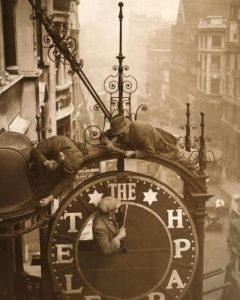
Workmen dismantle Daily Telegraph clock, London, 1930
The Telegraph clock was commissioned to create the clock in 1879. The clock that would serve as a bold and unmistakable symbol of the Daily Telegraph’s presence in Fleet Street, the ‘street of ink’, which was then the center of London’s newspaper industry.
The clock was a popular landmark in Fleet Street and became a point of reference for Londoners and visitors alike. It was known for its accuracy and reliability, and the chimes of its bell could be heard throughout the neighborhood.
Under Levy’s leadership, the Daily Telegraph became known for its reporting on crime, scandal, and politics. It was one of the first newspapers in the UK to use telegraph wires to gather news from around the world, which allowed it to break major stories and deliver up-to-date information to its readers.
In the 1870s, the Daily Telegraph was sold to William Edward Saunders, who continued to build its reputation for investigative journalism and political coverage. The Daily Telegraph became a leading voice in British politics and was often associated with the Conservative Party. By 1927 readership had dwindled to a mere 84,000 and the offices were relocated.
The Clock Moves
In the 1930s the clock was dismantled. A different clock was used in the new location.
In the 20th century, the Daily Telegraph continued to evolve and adapt to changing times. As part of its legacy, it was one of the first UK newspapers to publish a Sunday edition, which helped to increase its readership and influence. In the 1960s, the newspaper underwent a major redesign and modernization, and it began to focus more on international news and business reporting.
The Clock Moves Again
After the Daily Telegraph moved to new offices in 2004, the clock was taken down and underwent a major restoration project. It was eventually reinstalled in a new location near the newspaper’s former offices, where it continues to serve as a reminder of the newspaper’s history and legacy.

The clock was installed on the exterior of the Daily Telegraph’s building and quickly became a popular landmark in Fleet Street. It was praised for its accuracy and reliability, and its chimes could be heard throughout the neighborhood. Over the years, it became one of the most recognizable symbols of the Daily Telegraph’s history and legacy.
The former home of the London Daily Telegraph is a 1928 Art Deco building of Portland stone. It features an Art Deco clock added in 1930. The building was designed by Elcock C. Sutcliffe with Thomas Tait.
Today, the Daily Telegraph is one of the UK’s most respected newspapers and has a reputation for high-quality journalism and analysis. It remains a popular choice for readers who are interested in politics, business, and current affairs.
The Daily Telegraph: the clock stops
A brief history of the Daily Telegraph clock and building its significance to the City of London.
THE FACSIMILE TELEGRAPH
The facsimile telegraph was perfected in the 1930s and was widely used for sending photographs and other graphic information over telephone and telegraph lines in an analog transmission system.
The facsimile telegraph, also known as the fax machine, was a revolutionary invention in the 1930s that allowed for the transmission of photographs and other graphic information over telephone and telegraph lines in an analog transmission system. The technology used a scanning device to convert an image into a series of electrical signals, which could then be sent over a telephone or telegraph line to a receiving device. The receiving device would then convert the electrical signals back into an image, which could be printed out on paper.
The development of the fax machine revolutionized the way that images and other documents were transmitted between different locations. Prior to the invention of the fax machine, documents had to be physically transported between locations, which could be time-consuming and expensive. With the advent of the fax machine, documents and images could be transmitted instantly, saving time and reducing costs.
Although the technology behind the facsimile telegraph was perfected in the 1930s, it wasn’t until the 1980s and 1990s that the fax machine became widely used in businesses and homes around the world. The technology continued to evolve, with the introduction of digital fax machines in the 1990s and the ability to send faxes over the internet in the 2000s.
Today, the fax machine is less commonly used, as many businesses and individuals have switched to digital methods of document transmission, such as email and cloud-based file sharing. However, the facsimile telegraph remains an important invention in the history of communications technology, paving the way for the development of digital imaging and other forms of electronic communication.
The original telegraph was a communication system that used electrical impulses to transmit messages over long distances. It was first developed in the early 19th century and was based on the principle of electromagnetism. The system consisted of a transmitter, which converted the message into electrical signals, and a receiver, which decoded the signals and converted them back into the original message. The telegraph revolutionized long-distance communication and played a key role in the development of modern telecommunications.
LIVING BY THE CLOCK
Today, we live much of our lives “by the clock.” We are awakened by an alarm clock, we listen to the radio at a particular time, we travel to and from work at a certain time of day, we attend meetings that start and finish at predetermined times, we eat our meals according to the clock, not simply when we feel hungry, and the clock tells us when to go to a movie, to a concert, to the theater, or to watch our favorite television program. Indeed, not only are most of our daily activities regulated by the clock, they are often ruled down to the precise minute. This way of living is very recent. Not only does it depend on the uniform system of worldwide time measurement, it also requires that each one of us carries on our person a reliable means to keep track of time. The development of first the pocket watch and then the wrist watch also changed the way we view, and live, our lives. Completion of the revolution in human life brought about by the evolution of our concept of time was as much a technological step as an intellectual one. To live according to the regular beat of man-made time, we have to carry time around with us. More accurately, since our present-day watches do not (yet) communicate with each other or with any centralized “time station,” we carry around with us a device that manufactures a personal time, that is built to be in synchronization with official time to within a few seconds.
The accuracy (and cheapness) of today’s watches and clocks comes from an observation made by the Frenchman Pierre Curie in 1880. Curie noticed that when pressure is applied to certain crystals — quartz crystals, for example — they vibrate at a certain, highly constant frequency. Subsequent investigations showed that subjecting crystals to an alternating electric current also caused them to vibrate. The first use of this phenomenon was in the design of radios, to provide a broadcast wave of constant frequency. Then, in 1928, W. A. Marrison of Bell Laboratories built the first quartz-crystal clock, replacing the pendulum and the various other mechanical oscillating devices of previous timepieces by the constant vibrations of the quartz crystal. The quartz clock was so accurate and reliable, that already by 1939 it had replaced the mechanically-regulated clocks at the Observatory in Greenwich.
Though the resulting accuracy was not discernible to human consciousness, the arrival of the quartz clock to measure time changed the nature of time yet again. Since quartz crystals can vibrate at millions of times a second, the underlying basic unit of time provided by our timepieces changed from the second — the unit provided by mechanical oscillating devices — to units up to a million times smaller. The meant that our timepieces had developed to the point where time finally broke free of the natural phenomenon with which our very notion of time had originated: the earth’s daily rotation. With devices capable of measuring up to a millionth of a second, it was possible to measure the small discrepancy in the earth’s rotation from day to day. It no longer made sense to define the second as 1/86,400th of a mean solar day (86,400 = 24 x 60 x 60). Instead, we now base our time on the daily movement of distant quasars. Administered in Paris, this international, astronomical time is called Coordinated Universal Time (UTC).
Humans live their lives according to the clock, a phenomenon that is relatively new in human history. The accuracy and affordability of today’s watches and clocks are based on a discovery made by Pierre Curie in 1880, who observed that applying pressure to certain crystals such as quartz made them vibrate at a constant frequency. This led to the invention of the quartz-crystal clock in 1928 by W.A. Marrison of Bell Laboratories. The quartz clock was so reliable and accurate that it replaced mechanically-regulated clocks by 1939. With the arrival of the quartz clock, time broke free from the earth’s rotation, which was the basis of natural timekeeping, and became based on the movement of distant quasars. Today, the international astronomical time known as Coordinated Universal Time (UTC) is administered in Paris.
THE CLOCK OF THE LONG NOW
Anyone who has visited Stonehenge — which among possible other purposes was undoubtedly a timekeeping device — will have felt the sense of awe at the technological skills of our ancestors many thousands of years ago. With many of today’s timepieces barely lasting from one Christmas to the next, will the present generation leave a similar legacy to the future?
Several years ago, the computer scientist Danny Hillis (the designer of the massively parallel computer called the Connection Machine) asked whether modern technology would allow us to build a mechanical clock that would keep running and yield accurate time for at least 10,000 years. Such a device would be a twentieth century legacy to the future, a present-day analogue of Stonehenge.
Hillis first wrote about his idea in 1993: “When I was a child, people used to talk about what would happen by the year 2000. Now, thirty years later, they still talk about what will happen by the year 2000. The future has been shrinking by one year per year for my entire life. I think it is time for us to start a long-term project that gets people thinking past the mental barrier of the Millennium. I would like to propose a large (think Stonehenge) mechanical clock, powered by seasonal temperature changes. It ticks once a year, bongs once a century, and the cuckoo comes out every millennium.”
Such a device could do for time what photographs of Earth from space have done for thinking about the environment, Hillis suggests. It could become an icon that reframes the way people think.
With assistance from Whole Earth founder Stewart Brand, the musician and technophile Brian Eno, and others, Hillis established a foundation to support the design, construction, and maintenance of his clock. Eno called it “the clock of the long now,” which Brand took as the title for a book on the project, published last year. The Long Now Foundation was officially established in 1996 — or rather 01996 in Long Now Time, since a 10,000 year clock will have to count years with five digits to avoid a future Y10K problem.
The prototype of the 10,000 year clock Hillis is working on stands eight feet tall, and is constructed of Monel alloy, Invar alloy, tungsten carbide, metallic glass, and synthetic sapphire. (The eventual one may be larger.) The prototype is due to debut on January 1st 2000. It measures time by what Hillis calls a serial-bit adder, a highly accurate binary digital-mechanical system he invented. Its 32 bits of accuracy gives it a precision equal to one day in 20,000 years. It self-corrects by intermittently locking on to the sun. The mechanical power to “wind it up” could be provided by the alternate solar-heating and nighttime-cooling from the daily cycle of day and night, or from the annual warming and cooling of the seasons. An intriguing supplementary — or even alternative — source of power Hillis has suggested is to establish an annual “winding of the clock” as a worldwide cultural event.
For a society that lives its life by the clock and by technology, Hillis’s Clock of the Long Now would surely be a fitting memorial to mark the close of the twentieth century. Without doubt, it’s about time.
The Clock of the Long Now is a proposed mechanical clock that would be able to keep accurate time for at least 10,000 years. The idea was first proposed by computer scientist Danny Hillis in 1993, and with the help of others, including musician and technophile Brian Eno and Whole Earth founder Stewart Brand, a foundation was established to support the design, construction, and maintenance of the clock. The prototype stands eight feet tall and is made of various materials, including Monel alloy, Invar alloy, tungsten carbide, metallic glass, and synthetic sapphire. It measures time using a highly accurate binary digital-mechanical system invented by Hillis, which has a precision of one day in 20,000 years. It can be powered by solar heating and nighttime cooling or by the warming and cooling of the seasons. Hillis suggests that an annual “winding of the clock” could become a worldwide cultural event. For further information about Hillis’s clock, check out the web site of the Long Now Foundation at http://www.longnow.org/
The Long Now Foundation’s Clock of the Long Now project, which is inspired by Stonehenge, aims to create a mechanical clock that will keep time accurately for at least 10,000 years. The clock, which will be powered by seasonal temperature changes, will tick once a year, bong once a century, and the cuckoo will come out every millennium. The project’s goal is to inspire people to think about the long-term future and to create a lasting legacy for future generations.
STONEHENGE and TIME
Anyone who has visited Stonehenge — which among possible other purposes was undoubtedly a timekeeping device — will have felt the sense of awe at the technological skills of our ancestors many thousands of years ago. With many of today’s timepieces barely lasting from one Christmas to the next, will the present generation leave a similar legacy to the future?
Stonehenge is a prehistoric monument located in Wiltshire, England, and was constructed over several phases between 3000 and 2000 BC. It is believed that Stonehenge served as an astronomical observatory and a calendar, as it was built to align with the movements of the sun and the moon. The ability of our ancient ancestors to build such a complex structure without the benefit of modern technology is indeed impressive.
The question of whether our generation will leave a similar legacy to the future. Despite the incredible advancements in technology that have been made in recent years, many modern timepieces have a relatively short lifespan, often breaking or becoming obsolete after just a few years. This raises the question of whether we are prioritizing short-term convenience over long-term durability and legacy-building.
To address this issue, computer scientist Danny Hillis proposed the idea of building a mechanical clock that could run for at least 10,000 years and serve as a legacy to future generations, similar to the way Stonehenge has stood the test of time. This clock, known as the Clock of the Long Now, would be powered by seasonal temperature changes and would tick once a year, bong once a century, and have a cuckoo come out every millennium.
While Stonehenge was likely used as a timekeeping device by our ancestors, many of today’s timepieces are not built to last for centuries or even millennia. The author wonders whether our generation will be able to leave a similar legacy for future generations to admire. This question leads to the discussion of a project initiated by computer scientist Danny Hillis in the 1990s. Hillis proposed building
Stonehenge is a prehistoric monument located in Wiltshire, England, and was constructed over several phases between 3000 and 2000 BC. It is believed that Stonehenge served as an astronomical observatory and a calendar, as it was built to align with the movements of the sun and the moon. The ability of our ancient ancestors to build such a complex structure without the benefit of modern technology is indeed impressive.
Stonehenge is an iconic prehistoric monument and UNESCO World Heritage site located in the English countryside. The monument consists of a circle of standing stones, each weighing around 25 tons, and arranged in a precise pattern. The stones were brought to the site from quarries located miles away, and their transportation and placement required an immense amount of effort and ingenuity.
The monument is believed to have been constructed in several phases over a period of around 1,500 years, beginning around 3000 BC. Stonehenge was likely used for a variety of purposes, including as a burial site, a ceremonial site, and an astronomical observatory.
One of the most impressive features of Stonehenge is its alignment with the movements of the sun and the moon. The stones are arranged in such a way that they mark the position of the sunrise and sunset on the summer and winter solstices, and the positions of the moon at certain times of the year. This suggests that Stonehenge was used as a calendar to mark the changing seasons and the passage of time.
The construction of Stonehenge is a testament to the advanced technological skills and knowledge of our ancient ancestors. The fact that they were able to transport and erect such massive stones without the benefit of modern technology is truly remarkable. Stonehenge remains a symbol of human ingenuity and a source of fascination for people around the world.
Stonehenge has become one of the most recognized and iconic landmarks in the world, drawing visitors from far and wide. Its enigmatic origins and mysterious purpose continue to fascinate scholars, historians, and tourists alike, and it remains a testament to the ingenuity and resourcefulness of the people who built it. The site has also played a significant role in shaping our understanding of the ancient world, providing important insights into the social, cultural, and technological achievements of prehistoric societies.
Moreover, Stonehenge has served as a source of inspiration for artists, writers, and musicians over the centuries. It has been featured in countless works of literature and art, and its image has been used in popular culture to represent a wide range of themes, from the mystical and spiritual to the scientific and technological. Its enduring popularity speaks to its timeless appeal and its ability to capture the human imagination in ways that transcend time and place.
Stonehenge’s timeless appeal stems from its impressive engineering, cultural significance, and the mystery surrounding its purpose. The monument was built using massive stones weighing up to 25 tons, some of which were transported from over 200 miles away, and it has stood for over 4,000 years. Its cultural significance lies in its possible use as an astronomical observatory, a calendar, a burial site, or a place of worship for prehistoric people.
One of the most fascinating aspects of Stonehenge is its ability to keep time. The monument’s alignment with the movements of the sun and the moon suggests that it was used as a calendar, and it is still used by modern-day druids and pagans to mark the solstices and equinoxes. Stonehenge also served as a symbol of power and authority for ancient societies, as it was a complex structure that required significant resources and organization to build.
Stonehenge’s timeless appeal lies in its impressive engineering, cultural significance, and ability to keep time. The Long Now Foundation’s Clock of the Long Now project is a modern-day attempt to create a legacy that is inspired by Stonehenge’s ability to endure and inspire for thousands of years.
ABOUT TIME
The article “ABOUT TIME”, Keith J. Devlin, on the Mathematical Association of America website, explores the idea and concept of time and its relationship with mathematics. He starts by highlighting the fact that time is a fundamental aspect of human experience and that our ability to measure and understand it is a crucial part of our scientific and technological progress.
Devlin then delves into the different ways that time can be measured, from the rotation of the earth to atomic clocks, and how these methods have evolved over time. He also discusses the challenges that arise when trying to measure time accurately, such as accounting for the effects of relativity.
Next, Devlin explores the role that mathematics plays in understanding time, from the use of calculus to model the motion of objects over time to the mathematical theories behind the concept of time travel.
Finally, Devlin concludes by reflecting on the significance of time and the importance of continued research and exploration in this field. He emphasizes the idea that time is not just a scientific concept, but also a deeply personal and cultural one, shaping the way we experience the world around us.





